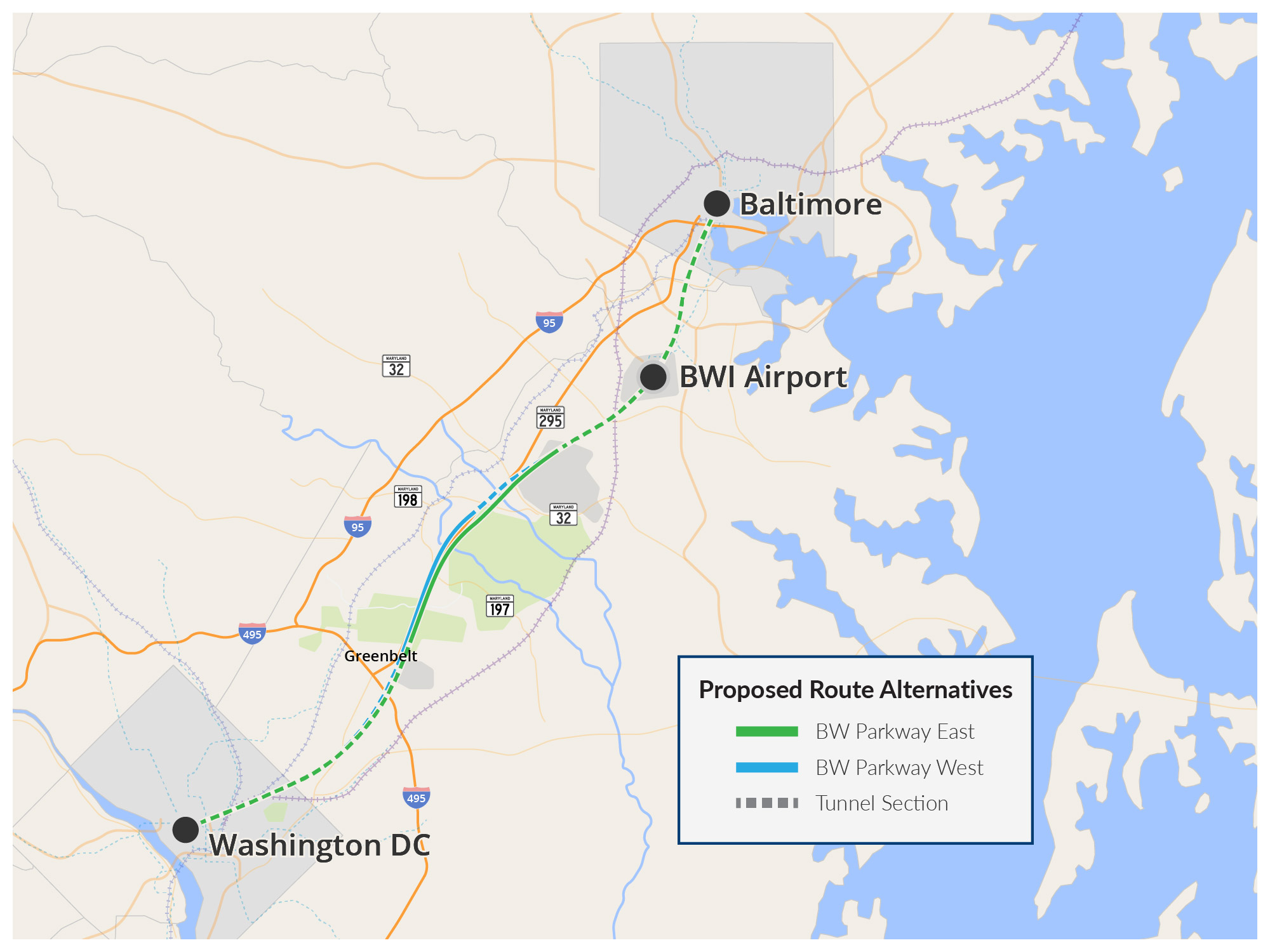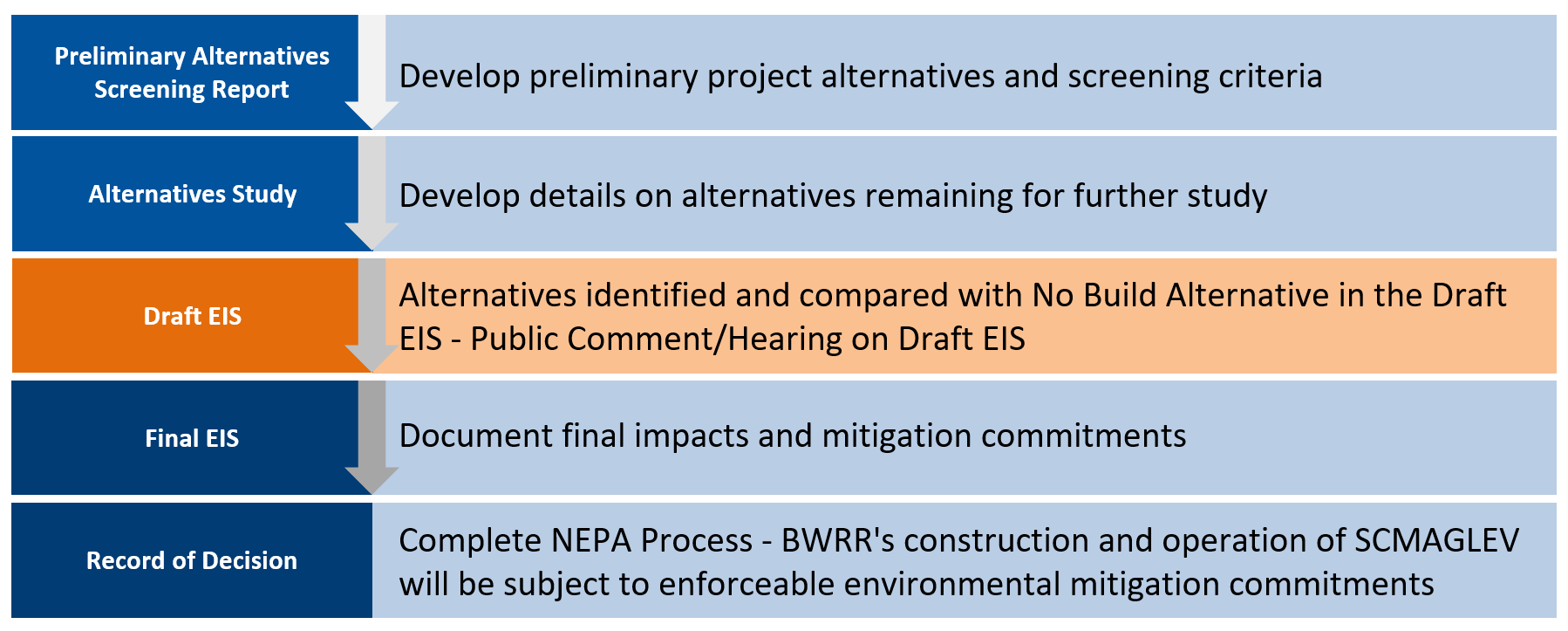What is the EIS?
The EIS (Environmental Impact Statement) is being prepared in compliance with the National Environmental Policy Act (NEPA). In the NEPA process, agencies evaluate the environmental and related social and economic effects of a proposed system. The process also provides opportunities for both public review and comment on these evaluations. The current EIS process is designed to evaluate all aspects of bringing the SCMAGLEV technology to the region.
The FRA-led National Environmental Policy Act (NEPA) process provides a ‘hard look’ at potential project impacts, providing full disclosure through developing and publishing the Environmental Impact Statement (EIS). The EIS will analyze the potential direct, indirect, and cumulative effects of the alternatives (both build and ‘no-build’ options) on the social, economic, and environmental resources in the study area. This analysis will include identification of study areas appropriate for each resource, documentation of the affected environment, and identification of measures to avoid and / or mitigate significant adverse impacts. FRA and MDOT-MTA will evaluate the impacts of the proposed project using data and field analyses. The analysis of resources will be consistent with NEPA, CEQ (Council on Environmental Quality) regulations and FRA’s Environmental Procedures.



